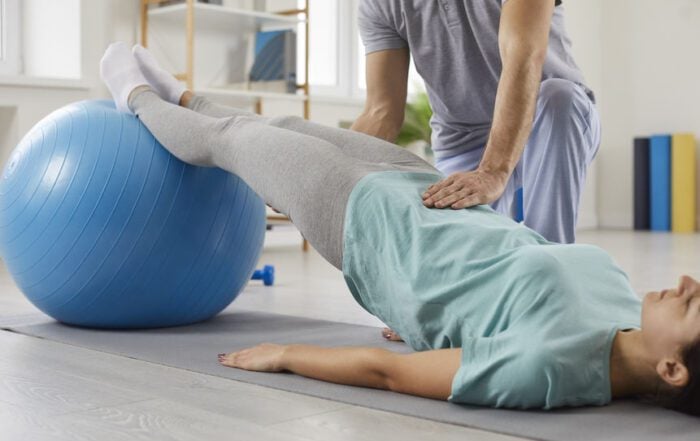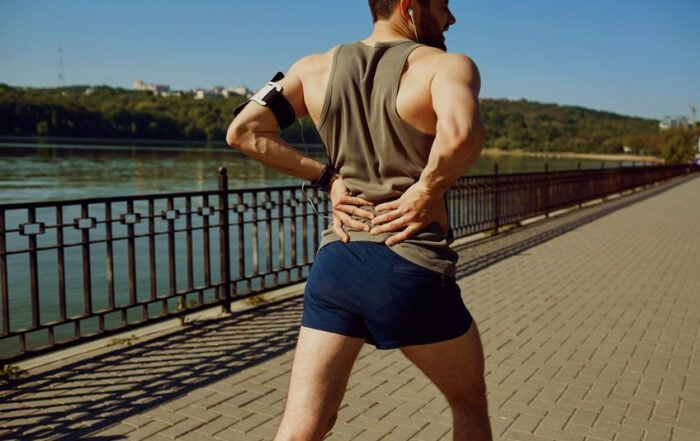Rehabilitation After Total Knee Replacement
When a patient’s knee pain worsens and conservative treatments no longer work, a doctor may recommend a total knee replacement (TKR) surgery. This is a major procedure that involves removing the damaged parts of the knee joint and installing prosthetic components. This surgery is an effective option to restore mobility and alleviate pain, allowing patients to lead active lives again. However, proper rehabilitation is necessary for a full recovery, particularly in regaining the range of motion (ROM) in the affected knee. To help patients get active again following TKR, 4 simple yet effective stretches to improve ROM and aid in healing should be integrated into the daily routine.

1. Quad sets, anyone?
During recovery, quad sets are simple exercises that can help strengthen the quadriceps muscles, which play a crucial role in knee function. To perform this stretch, the patient sits on the floor with the legs straight out in front. Tighten the thigh muscles and press the back of the knee down to the floor. Hold this position for 5 seconds, then release. Repeat this exercise as recommended by the physical therapist.
2. All hail heel slides
Another fantastic exercise that can help improve the range of motion after TKR is heel slides. To perform this stretch, lie on the back with the legs straight out in front. Slowly slide the heel towards the buttocks and bend the knee. Hold this position for 10-15 seconds, then slide the heel back to the starting position. Sliders can be purchased to help with the exercise, but non-grip socks also work well. Repeat 2-3 times per day or as recommended by the physical therapist.
3. Hamstring stretches
To improve flexibility in the back of the knee, the patient should try hamstring stretches after surgery. To perform this stretch, lie on the back with the legs straight out in front. Slowly lift a leg off the floor and gently pull the limb towards the chest, keeping the knee straight. Hold this position for 10-15 seconds, then release. Repeat on both sides as needed.
4. Calf stretches
Finally, calf stretches can help improve the patient’s flexibility in the lower leg, which can, in turn, enhance the range of motion in the knee. To perform this stretch, stand facing a wall with the hands on the wall at shoulder height. Step the foot back and press the heel into the floor, keeping the knee straight. Hold this position for 10-15 seconds, then switch legs.
Sensing a pattern here?
These 4 simple stretches can help improve ROM after a total knee replacement. These do not necessarily exercise the knee but the surrounding muscles essential for function. A stronger leg means a more supported knee and an increased chance of an active lifestyle. Perform these exercises consistently during the rehabilitation period for the best results. However, stop and speak with the healthcare provider if any pain or discomfort occurs. With patience and dedication, the recovering patient can regain mobility and enjoy a pain-free life after TKR surgery.
Recent Posts
What To Do About Hip Pain: Is It Time To See An Orthopedic Surgeon About Labral Repair?
Hip pain should not be overlooked, as the issue could be a labral tear. Symptoms like pain and instability require an orthopedic surgeon’s assessment.
ACL Repair: Will You Have Range Of Motion With Your Knee After Recovery & Physical Therapy?
After an ACL injury, ROM can be negatively affected. ACL repair surgery helps restore function, but physical therapy is essential to ROM.
Arthroscopy: What Are The Benefits Of This Minimally Invasive Outpatient Orthopedic Procedure?
Arthroscopy can help diagnose or treat joint conditions. Benefits of the MIS include faster recovery, less pain, and fewer scars.
Posterior Interbody Lumbar Fusion: What Are The Benefits Of PLIF For People With Back Pain?
People with chronic back pain may benefit from posterior interbody lumbar fusion surgery. PLIF can reduce pain and improve stability.








